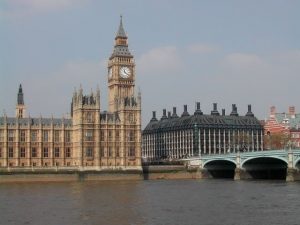New Ranking Reveals U.S. and European Cities Are World’s Most Competitive
Mid-Size Cities Emerging as Key Drivers of Global Growth
Asian Cities Strongest Economically: EIU Report
A new Economist Intelligence Unit (EIU) research report reveals that New York, London and Singapore rank first, second and third in competitiveness, out of 120 of the world’s major cities. Released today, the report, entitled Hot Spots, ranks the most competitive cities in the world for their demonstrated ability to attract capital, business, talent and tourists.
The report aims to improve understanding of market competitiveness and to identify where growth, opportunity and talent are likely to be found in the decades ahead. Its findings provide valuable insight for investors, institutions, and municipalities in cities around the world.
“Economic dynamism is definitely rising elsewhere, especially in Asian cities, but U.S. and European cities have legacy advantages that give them a strong competitive edge,” said Leo Abruzzese, the EIU’s global forecasting director. “In particular, these developed cities are better at attracting top talent from across the world.”
With a combined population of about 750 million, the 120 cities ranked in Hot Spots represent approximately 29 percent of the global economy and generated a combined GDP of US$20.24 trillion in 2011.
According to the report, the ten most competitive cities in the world are:
- New York (1st),
- London (2nd),
- Singapore (3rd),
- Paris and Hong Kong (joint 4th),
- Tokyo, (6th),
- Zurich (7th),
- Washington, DC (8th),
- Chicago (9th), and
- Boston (10th).
The Global City Competitiveness Index
For Hot Spots, the EIU developed a “Global City Competitiveness Index” that measures cities across eight distinct categories of competitiveness and 31 individual indicators. Categories include economic strength, human capital, institutional effectiveness, financial maturity, global appeal, physical capital, social and cultural character and environment and natural hazards. A city’s overall ranking in the benchmark Index is a weighted score of the underlying categories.
 Since no one city excels in every category, a diverse range of cities ranks first in each of the eight categories: Tianjin (economic strength); Dublin (human capital), Zurich (joint first in financial maturity and institutional effectiveness; social and cultural character); Vancouver (joint first physical capital); London (global appeal) and Montreal (environment and natural hazards).
Since no one city excels in every category, a diverse range of cities ranks first in each of the eight categories: Tianjin (economic strength); Dublin (human capital), Zurich (joint first in financial maturity and institutional effectiveness; social and cultural character); Vancouver (joint first physical capital); London (global appeal) and Montreal (environment and natural hazards).
Key findings include:
The most significant advantage that developed country cities hold is their ability to develop and attract the world’s top talent. European and American cities dominate the human capital category of the Index, as they are able to continue to attract capital, businesses, talent and tourists despite concerns over aging infrastructure and large budget deficits. It will be key for these Western cities to harness their legacy advantages and global connectivity to continue to compete and succeed against fast-growing emerging market cities.
11 of the top 30 cities are European: London (2nd), Paris (4th), Zurich (7th), Frankfurt (11th), Geneva (joint 13th), Amsterdam (17th), Stockholm (joint 20th), Copenhagen (joint 23rd), Vienna (joint 25th), Dublin (27th) and Madrid (28th).
Asia’s economic rise is reflected in the economic competitiveness of its cities: In terms of “economic strength,” the most highly weighted category, 15 of the top 20 cities are in Asia. Twelve are in China. Tianjin, Shenzhen and Dalian top the list, while nine other Chinese cities rank in the top 20. Singapore (15th), Bangalore (16th), Ahmedabad (19th) and Hanoi (joint 20th) complete the top 20. The top 32 Asian cities are all forecast to grow by at least 5% annually between now and 2016. Twelve of them will grow by at least 10%.
A “middle tier” of mid-size cities is emerging as a key driver of global growth: Although most companies target a combination of advanced economies and emerging markets megacities, the fastest overall growth is found in a middle tier of mid-sized cities with populations of 2m-5m such as Abu Dhabi, Bandung, Dalian, Hangzhou, Hanoi, Pune, Qingdao and Surabaya. In fact, just nine of the 23 megacities (with populations over 10 million) ranked in the top 30 on economic strength. These mid-size cities are collectively forecast to grow by 8.7% annually over the next five years, ahead of the megacities on which many firms focus.
Infrastructure investments will drive emerging markets growth, but more will be needed to secure their attractiveness to tomorrow’s talent: One of the most pressing challenges for emerging market cities in the decades ahead will be whether they can focus their development not just on skyscrapers, rail links and other infrastructure, but also on the softer aspects that will be crucial to their ability to attract and develop tomorrow’s talent—including education, quality of life, and personal freedoms, among other things. In addressing these aspects of competitiveness, cities in Latin America and Africa including Buenos Aires (ranked 60th), Johannesburg (67th) and Cape Town (73rd) can quickly improve their performance in the ranking.



































